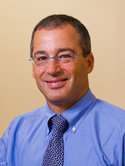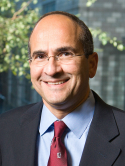Reconstruction after soft tissue sarcoma resection in the setting of brachytherapy: A 10-year experience Journal Article
| Authors: | Lee, H. Y.; Cordeiro, P. G.; Mehrara, B. J.; Singer, S.; Alektiar, K. M.; Hu, Q. Y.; Disa, J. J. |
| Article Title: | Reconstruction after soft tissue sarcoma resection in the setting of brachytherapy: A 10-year experience |
| Abstract: | Management of recurrent soft tissue sarcomas often involves surgical resection and adjuvant brachytherapy. This study reviews our experience in the management of these patients and proposes a logical approach toward reconstruction. All patients who underwent soft tissue sarcoma resection, adjuvant brachytherapy, and soft tissue flap reconstruction (pedicled or free) during the 10-year period from 1991 to 2000 were included in this study. There were 17 patients (14 male, 3 female) with a mean age of 51 years (range, 16-80 years). Soft tissue sarcomas were distributed in the lower extremity (n = 9), upper extremity (n = 5), and trunk (n = 3). Reconstruction was accomplished by regional transposition flaps (n = 10) and free tissue transfer (n = 7). The average defect size was 143 cm 2. Patients received 5 to 12 (mean, 8) brachytherapy catheters. The brachytherapy dose delivered ranged from 1600 to 4500 cGy (mean, 3773 cGy). Brachytherapy catheters were loaded with radioactive sources between 5 and 7 days postoperatively. All flaps in this series survived. One patient required return to the operating room for revision of a venous thrombosis with flap salvage. Closed suction drainage tubes were left in place until after the brachytherapy catheters were removed to avoid dislodging the catheters. Two patients developed postradiation partial-thickness skin necrosis with delayed secondary wound healing. This study demonstrates that soft tissue reconstruction in the setting of sarcoma resection and brachytherapy catheter placement is safe and efficacious. Postoperative wound healing complications can be minimized through coordination among the ablative surgeon, reconstructive surgeon, and radiation oncologist. Specifically, placement of microvascular anastomoses well away from the radiation target area is indicated whenever possible. Finally, removal of closed suction drainage tubes should be deferred until after the brachytherapy catheters are removed to minimize complications resulting from catheter dislodgement. |
| Keywords: | adolescent; adult; clinical article; treatment outcome; aged; aged, 80 and over; middle aged; surgical technique; reconstructive surgical procedures; review; microvascular surgery; plastic surgery; recurrent cancer; surgical approach; sarcoma; tissue distribution; dosimetry; vein thrombosis; soft tissue sarcoma; catheterization; brachytherapy; free tissue graft; operating room; skin necrosis; tissue flap; suction drainage; humans; human; male; female; priority journal |
| Journal Title: | Annals of Plastic Surgery |
| Volume: | 52 |
| Issue: | 5 |
| ISSN: | 0148-7043 |
| Publisher: | Lippincott Williams & Wilkins |
| Date Published: | 2004-05-01 |
| Start Page: | 486 |
| End Page: | 492 |
| Language: | English |
| DOI: | 10.1097/01.sap.0000122649.64350.e3 |
| PROVIDER: | scopus |
| PUBMED: | 15096934 |
| DOI/URL: | |
| Notes: | Ann. Plast. Surg. -- Cited By (since 1996):10 -- Export Date: 16 June 2014 -- CODEN: APCSD -- Source: Scopus |
Altmetric
Citation Impact
BMJ Impact Analytics
Related MSK Work








